Scott Hamilton – 15 July, 2014
By juxtaposing the two very different ways in which kolose can be exhibited, Mahina-Tuai and Papau seemed to be asking audiences to ponder the gap between the arts industry of the West and the cultures of Pacific societies like Niutao. They seemed to be asking, in particular, why Pasifika cultural artefacts like kolose have traditionally been excluded from art galleries in New Zealand and other Western nations.
Mangere
Fafine Niutao i Aotearoa
Kolose: the Art of Tuvalu Crochet
Curated by Marama Papau and Kolokesa Mahina-Tuai
18 May - 29 June 2014
Few New Zealanders know much about Tuvalu’s history and culture, but many of us have a vivid sense of its future. The Western Polynesian nation has been made famous, over the last decade, by scientists and environmentalists concerned about the consequences of global warming. Because it is composed only of miniscule, low-lying atolls, Tuvalu has often been cited as a likely casualty of the rising seas that global warming is supposed to create as the twenty-first century wears on.
If the Tuvaluans have to abandon their islands in a few decades’ time, then many of them will likely head for New Zealand, which is already home to four thousand of their relatives. Most Tuvaluan Kiwis live in the West Auckland, and the western suburb of Ranui is home to a particularly large branch of the Church of Tuvalu. Ranui is also the locus for Fafine Niutao i Aotearoa, a collective of female artists from Niutao, an atoll that sits about two hundred kilometres northwest of the Tuvaluan capital Funafuti.
Around six hundred people live on Niuato’s three square kilometres; many others have emigrated to Funafuti or to Australasia. Fafine Niutao i Aotearoa was founded in 2012 to produce kolose, or crocheted work, for the Fono Ekalesia Tuvalu, a biannual church celebration which will be held on Niutao in September of this year. Niutao women have regularly travelled from distant parts of Auckland’s suburban archipelago, like Mangere and Otahuhu and Pukekohe, to the homes of their kinfolk in Ranui, where they have worked on large adornments for their island’s church and for its churchgoers.
In small subgroups and individually, members of Fafine Niutao i Aotearoa have produced crocheted wall hangings, star-shaped hanging decorations, and a cover for the pulpit of Niutao’s Presbyterian church in Ranui. Just as important are the crocheted tops and petticoats that daughters, grand-daughters, nieces, and cousins of the members of Fafine Niutao i Aotearoa will wear during September’s festivities.
From the middle of May until the end of June, twenty-three members of Fafine Niutao i Aotearoa showed off their work at the Mangere Arts Centre, in an exhibition curated by Marama Papau, a Tuvaluan Kiwi who has worked as a presenter and reporter for Television New Zealand’s Tagata Pasifika programme, and Kolokesa Mahina-Tuai, the associate Pacific curator at the Auckland War Memorial Museum. Kolose: the Art of Tuvalu Crochet marked the first appearance by Tuvaluan artists in a mainstream art gallery.
When I stepped into the Mangere Arts Centre and saw kolose hanging from walls and mounted on headless, limbless mannequins, my eyes were immediately excited by their bold geometric forms and their bright colour schemes. Viewed across the white spaces of a contemporary fine arts gallery, the kolose could almost be mistaken for the compositions of masters of high modernist abstract art like Mondrian or Mrkuisch.
But a looped film projected onto a spare stretch of gallery wall reminded me of the differences between the Western art world that created the likes of Mondrian and the world of Niutao. The film, which was shot at a Niutao community event in 2011, showed a group of women wearing kolose tops and petticoats singing and dancing, while a larger group of men, women, and children sat at their feet. Pounding the floor with their hands and feet, the audience set up a beat which had the soothing relentlessness of a calm ocean breaking against a coral reef. As the dancers made delicate half-circles with their hands and shook hips hidden by heavy pandanus leaf skirts, the bright lozenges and rectangles on their kolose vibrated.
The film showed the context in which kolose are usually exhibited and appreciated. These objects are not normally designed to be viewed quietly and individually in an art gallery. They are usually intended to adorn social occasions, like church services or community celebrations.
By juxtaposing the two very different ways in which kolose can be exhibited, Mahina-Tuai and Papau seemed to be asking audiences to ponder the gap between the arts industry of the West and the cultures of Pacific societies like Niutao. They seemed to be asking, in particular, why Pasifika cultural artefacts like kolose have traditionally been excluded from art galleries in New Zealand and other Western nations.
Very often, examples of Pacific material culture - tapa cloths, ceremonial masks, carved vaka, and a range of other items - have been defined, by museologists, curators, and art critics, as works of ‘craft’, rather than of art. What is it, Mahina-Tuai and Papau might have been asking, that makes an abstract painting on canvas a piece of art, but a kolose - or a tapa cloth, or a ceremonial mask, or a carved vaka - a mere work of craft?
When RG Collingwood insisted, in his influential treatise The Principles of Art, that art and craft were very different things, he contrasted the creative artist, who supposedly follows his or her inspiration and is unafraid to innovate, with the convention-bound craftsman or woman, who works within rules laid down by tradition, and refuse to indulge in self-expression. Despite the best efforts of Grayson Perry, the dichotomy Collingwood described remains widely accepted today.
The distinction between craft and art begins to unravel, though, when we consider kolose. As Papau and Mahina-Tuai point out in their exhibition catalogue, kolose artists like to ‘freestyle’, by improvising patterns and choosing colours while they work. Far from adhering to some group style, the makers of kolose compete energetically with one another. Mahina-Tuai and Papau quote Fafine Niutao i Aotearoa member Lakilolo Keakea, who likes to ‘show off’ both her kolose and the daughters and grand-daughter who wear them. (1)
Collingwood and many other aestheticians have tried to present art as a necessarily individual enterprise, and to denigrate collectivism as an enemy of creativity. With its combination of individual inspiration and group solidarity, though, Fafine Niutao i Aotearoa troubles such a dicthotomy.
As Mahina-Tuai and Papau make clear in their catalogue, kolose is not some piece of unchanging tradition but a modern, innovative art form. Although the origins of the kolose are somewhat unclear, it appears to have arrived in Tuvalu in the middle of the twentieth century, and to have become particularly popular on Niutao.
Kolokesa Mahina-Tuai would not have been upset if Kolose: the Art of Tuvalu Crochet prompted a questioning of the differences between Pasifika and Western understandings of art. For Mahina-Tuai, the exhibition is part of a campaign to bring the material culture of New Zealand’s Pasifika communities into art galleries. In a series of interventions at meetings of Pasifika scholars and curators in recent years, Mahina-Tuai has criticised the ways that palangi categorise Pasfika art and artists. In a paper delivered at the 2013 conference of the Tongan Research Association, for example, she complained that:
From a Western perspective our fine arts are defined using terms such as ‘traditional’, ‘heritage’ or handicraft’. These definitions when used to define our fine arts, suggest art practices that are stuck in the past and static when in fact they are just as creative and innovative as other makers of art. They also serve to devalue our art forms especially in comparison to what is referred to as ‘contemporary’ art. (2)
When she argues that the members of groups like Fefine Niutao i Aotearoa should be respected as creative artists, rather than patronisingly regarded as the makers of quaint handicrafts, Mahina-Tuai is swimming against a very cold and powerful stream.
In New Zealand and other Western nations, the arts industry is structured around the creation and promotion of ‘star’ artists, who show their work at high-end galleries, sell it for large sums to collectors and institutions, and dominate the consciousness of critics and cultural historians. What place is there, in such an industry, for work that is made by artists with low or non-existent public profiles, that is given away rather than sold, and that may be used for a specific social event, like a festival or a conference, and then discarded? The members of Fafine Niutao i Aotearoa cannot be made into stars, and their work cannot be commodified. It is not surprising they have been marginalised by our arts industry. (3)
Although Mahina-Tuai’s campaign on behalf of low-profile, non-commercial Pasifika artists might seem lonely, and perhaps even quixotic, it has some important precedents and parallels. Her polemics against discriminatory definitions of art recall, whether deliberately or not, the critiques of the inequities and absurdities of the capitalist art world that have been a part of left-wing intellectual tradition since the nineteenth century.
In their different ways Diego Rivera, Hamish Henderson, and Pierre Bourdieu all argued that capitalist societies have a habit of defining art in a manner that serves the interests of the wealthy and excludes whole communities.
Rivera, whose epic murals were intended partly as protests against the tendency of capitalism to reduce art to a non-functional commodity stowed securely in galleries, would share Mahina-Tuai’s delight at the close links between art and life that persist in the Niutao diaspora.
Henderson, who travelled through Britain collecting the songs and dances of crofters, gypsies, and other marginalised communities, and then struggled to get these treasures admitted to a ferociously guarded canon, would empathise with Mahina-Tuai’s frustration at false distinctions between craft and art.
Bourdieu, whose famous book Distinction: A Social Critique of the Judgement of Taste argued that the privileged holders of ‘cultural capital’ ultimately determine what is and isn’t considered art, would not be surprised that Pasifika arts collectives have so seldom been welcomed through the doors of New Zealand galleries.
I hope that Kolokesa Mahina-Tuai continues her campaign against the exclusion of Pasifika communities from the New Zealand art industry, and that other galleries follow the lead of the Mangere Arts Centre and lend her support.
Scott Hamilton
(1) Keakea’s words perhaps offer a clue to the extraordinary vivacity of the kolose displayed at the Mangere Arts Centre. If the object of kolose dresses and petticoats is to draw attention to their wearers, then brilliant colours and bold patterns are sensible gambits. Like other Western Polynesian societies, Tuvalu has a storied musical tradition. Skilful songwriters and singers are revered and, according to anthropologist Gerd Koch, failure to hold a melody can be a source of shame. Is there a parallel between the competitive way Tuvaluans compose and sing songs and the competitive way they apparently make and wear kolose?
(2) Although Mahina-Tuai’s paper, which was called ‘Hikihiki kau’a: shifting boundaries in Tongan arts’, was focused on palangi misunderstandings of Tongan material culture, she has made the same points elsewhere when discussing the treatment of other Pacific cultures.
(3) Mahina-Tuai’s determination to bring new communities into the austere white spaces of the contemporary art gallery was reflected in the launch party for Kolose: the art of Tuvalu crochet. Determined to ensure that a significant section of Auckland’s Tuvaluan community was on hand to celebrate the work of Fafine Niutao i Aotearoa, Mahina-Tuai and Marama Papau hired a bus that drove to suburbs like Ranui, collected whole families, and brought them across Mangere bridge. Dancers adorned with kolose performed for these guests, who sang and beat time on the gallery’s walls and floor.
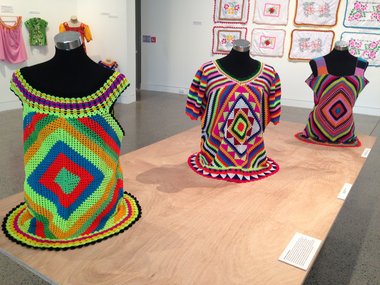
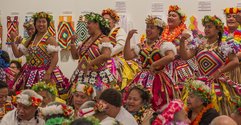
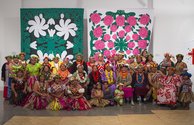

 Two Rooms presents a program of residencies and projects
Two Rooms presents a program of residencies and projects Advertising in this column
Advertising in this column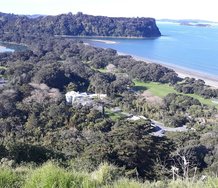
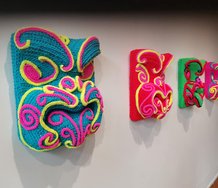

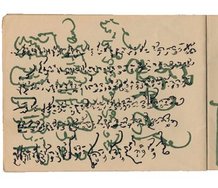
This Discussion has 0 comments.
Comment
Participate
Register to Participate.
Sign in
Sign in to an existing account.